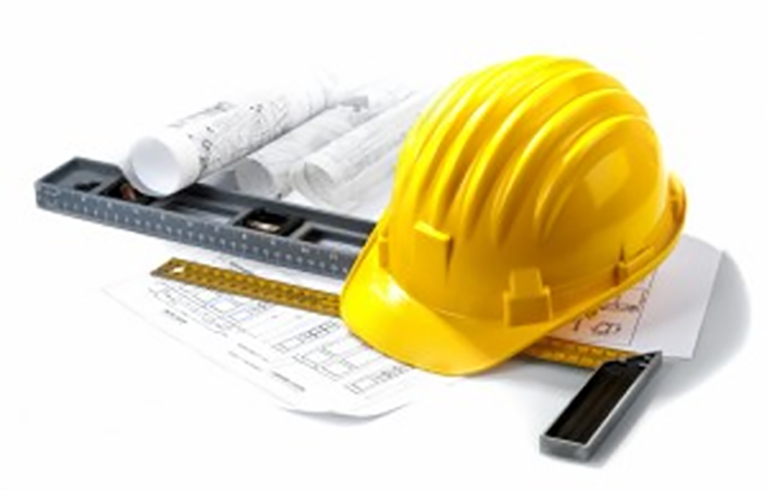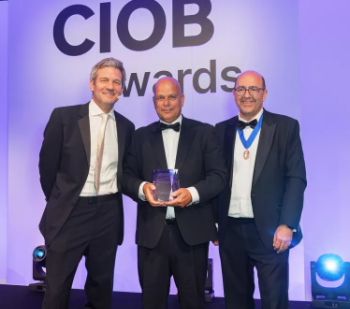Management in the construction industry
[edit] Introduction
In general terms, the word 'management' refers to a set of organisational principles and practices relating to the running and planning of a business, project or programme. It involves establishing and following an organisational strategy and coordinating stakeholders, employees and resources to achieve a series of intended objectives.
Management involves the exercise of formal authority within a structured organisational setting directed towards the efforts of other people using systems and procedures.
Management has many applications in construction and the built environment, some of the more common examples of which are set out below.
[edit] Construction management
Construction management is a procurement route in which the construction works are constructed by a number of different trade contractors. These trade contractors are contracted to the client but managed by a construction manager.
For more information see: Construction manager.
[edit] Management contracting
Management contracting is a procurement route in which the works are constructed by a number of different works contractors who are contracted to a management contractor. The management contractor is generally appointed by the client early in the design process so that their experience can be used to improve the cost and buildability of proposals as they develop.
For more information see: Management contractor.
[edit] Commercial management
Commercial management generally refers to the process of overseeing and managing a project's finances. It can also refer to the long-term management of business opportunities that will enable an organisation to develop and grow.
Commercial managers maximise business potential in terms of growth and profitability, while monitoring and controlling internal processes as well as managing external relationships with subcontractors, clients, and so on.
For more information see: Commercial manager.
[edit] Project management
A project manager is a specialist advisor that represents the client and is responsible for the day-to-day management of a project. They seldom participate directly in activities that produce the end result but rather strive to maintain the progress and mutual interaction of the project team in such a way that reduces the risk of failure, maximises benefits and controls cost.
For more information see: Project manager.
[edit] Supply chain management
Supply chain management requires a holistic perspective and a view of organisations as parts of a process. It requires the ability to look beyond organisational boundaries, and a recognition of the interdependence of organisations.
Managing the supply chain involves understanding the breakdown and traceability of products and services, organisations, logistics, people, activities, information and resources that transform raw materials into a finished product that is fit for its purpose.
For more information see: Supply chain management.
[edit] Design management
Design management (DM) is the process of managing design through the project lifecycle, in order that project budgets can be satisfied, programmes achieved, and designs properly co-ordinated and communicated.
For more information see: Design management.
[edit] Risk management
Risk management aims to recognise potential problems as early as possible so that the opportunity for taking effective action is maximised. By looking ahead at potential events that may impact on the project and by putting actions in place to address them, project teams can pro-actively manage risks and increase the chances of successfully delivering a project.
For more information see: Risk management.
[edit] Time management
Time management is the process of organising and implementing a strategy related to the time required for work activities on a project. Effective time management is essential to successfully and efficiently meet budget and programme targets, as well as achieving profitability.
[edit] Change management
Change management refers to the preparation and support that is required in the process of organisational change. It provides a structured approach to helping individuals, teams and entire organisations change their approach, attitude, position and responsibilities within an organisation.
For more information see: Change management
[edit] Contract management
Contract management is the process of managing contracts that are made as part of the delivery of a built asset. It involves the creation, analysis and execution of contracts by the parties to those contracts to ensure operational and financial performance is maximised, and risks are minimised.
For more information see: Contract management.
[edit] Resource management
Resource management is the process of planning the resources necessary to meet the objectives of a project. Without proper resource management, projects can fall behind schedule, or can become unprofitable. The objective is to ensure the adequate and timely supply of resources, whilst at the same time maximising the utilisation of resources between projects.
For more information see: Resource management.
[edit] Human resource management
Human resource management (HRM) is the process of managing people within an organisation. In construction, HRM is primarily concerned with ensuring that a project has sufficient human resources, with the correct skill-sets and experience, for the project to be successfully completed.
For more information see: Human resource management.
[edit] Waste management
Waste management concerns how materials will be managed efficiently and disposed of legally during the construction of the works, and how the re-use and recycling of materials will be maximised.
For more information see: Waste management and Site waste management plan.
Designing Buildings Wiki has a wide range of other articles relating to management, including:
- A new theory for managing large complex projects.
- Code of practice for project management.
- Code of practice for programme management.
- Construction environmental management plan.
- Construction inventory management.
- Guide to managing construction projects.
- How to become a construction manager.
- How to manage construction plant.
- Leadership on design and construction projects.
- Leadership styles.
- Logistics management in construction.
- Management structure for construction clients.
- Managing the procurement process.
- Performance management plan.
- Practice management.
- Relationship management.
- Safety management.
- Total quality management in construction.
- Value management.
Featured articles and news
Deputy editor of AT, Tim Fraser, discusses the newly formed society with its current chair, Chris Halligan MCIAT.
Barratt Lo-E passivhaus standard homes planned enmasse
With an initial 728 Lo-E homes across two sites and many more planned for the future.
Government urged to uphold Warm Homes commitment
ECA and industry bodies write to Government concerning its 13.2 billion Warm Homes manifesto commitment.
Places of Worship in Britain and Ireland, 1929-1990. Book review.
The emancipation of women in art.
CIOB Construction Manager of the Year 2025
Just one of the winners at the CIOB Awards 2025.
Call for independent National Grenfell oversight mechanism
MHCLG share findings of Building Safety Inquiry in letter to Secretary of State and Minister for Building Safety.
The Architectural Technology Awards
AT Awards now open for this the sixth decade of CIAT.
50th Golden anniversary ECA Edmundson awards
Deadline for submissions Friday 30 May 2025.
The benefits of precast, off-site foundation systems
Top ten benefits of this notable innovation.
Encouraging individuals to take action saving water at home, work, and in their communities.
Takes a community to support mental health and wellbeing
The why of becoming a Mental Health Instructor explained.
Mental health awareness week 13-18 May
The theme is communities, they can provide a sense of belonging, safety, support in hard times, and a sense purpose.
Mental health support on the rise but workers still struggling
CIOB Understanding Mental Health in the Built Environment 2025 shows.
Design and construction material libraries
Material, sample, product or detail libraries a key component of any architectural design practice.
Construction Products Reform Green Paper and Consultation
Still time to respond as consultation closes on 21 May 2025.
Resilient façade systems for smog reduction in Shanghai
A technical approach using computer simulation and analysis of solar radiation, wind patterns, and ventilation.

























Comments
[edit] To make a comment about this article, click 'Add a comment' above. Separate your comments from any existing comments by inserting a horizontal line.